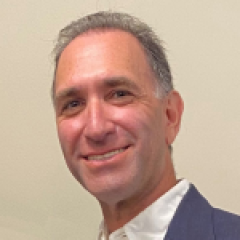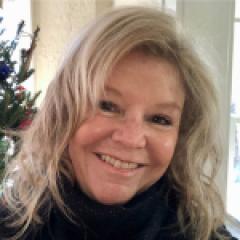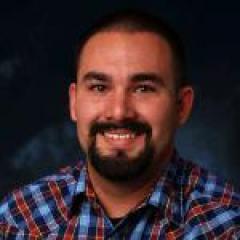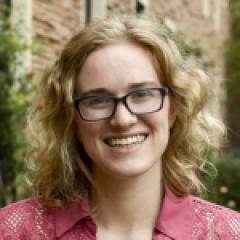Answer Sheet: At This School, the Inclusive Culture Matters as Much as the Curriculum

Anaya Burnette, a student at Health Sciences High and Middle College in San Diego, in May 2018. Her school was one of the winners of the "Schools of Opportunity" project. (Health Sciences High and Middle College in San Diego).
In San Diego, there is a high school where the culture of the school matters as much as the academics. It is Health Sciences High and Middle College, one of the 2017 winners of the “Schools of Opportunity” project, which recognizes public high schools that work to close opportunity gaps by creating learning environments that reach every student.
The Schools of Opportunity project started in 2014 as a pilot in New York and Colorado and went national in 2015-16. Several dozen schools have been honored in the program, which assesses a range of factors (see graphic below), including how well the adults in a school building provide health and psychological support for students, as well as judicious and fair discipline policies, and a broad and enriched curriculum.
This piece was co-written by Kevin Welner, a founder of the Schools of Opportunity project, director of the National Education Policy Center at the University of Colorado at Boulder, and professor specializing in educational policy and law. The other authors of this piece are Linda Molner Kelley, former assistant dean of teacher education and partnerships and director for outreach and engagement at the University of Colorado at Boulder; Adam York, an NEPC research associate and Schools of Opportunity project manager; and Michelle Doughty, a PhD student in educational foundations, policy and practice at the University of Colorado at Boulder.
The San Diego school is one of six “gold” winners in the 2017 Schools of Opportunity cycle. The others are Chicago High School for Agricultural Sciences, Lincoln High School in Nebraska, Denver South High, Broome Street Academy Charter High School in New York City and Seaside High School in California. The two silver Schools of Opportunity for 2017 are Hammond High School in Columbia, Md., and William C. Hinkley High School in Aurora, Colo.
[How one Maryland high school successfully boosted minority student enrollment in advanced classes]
By Kevin Welner, Linda Molner Kelley, Adam York and Michelle Doughty
Health Sciences High and Middle College, San Diego. Enrollment: 584, Leadership: Sheri Johnson, Dominique Smith and Julie Kroener.Superintendent: Ian Pumpian. Economically Disadvantaged students: 67 percent
Health Sciences High and Middle College in San Diego asks the same of its students, faculty and staff that we ask of doctors: to do no harm. The culture is built on respect and understanding, with a priority placed on students’ self-regulation and agency.
The warmth and compassion at Health Sciences is palpable from the moment a visitor walks in. You will hear no bells in the hallways or harsh words from (or to) the students. Instead, you will encounter friendly conversation driven by shared excitement about the learning opportunities that abound at the school.
This charter school has no admission requirements or other barriers to access. Eighty percent of Health Sciences’ students are students of color. The school actively recruits students with disabilities to ensure a diverse student body that is then formed into a close-knit community. (Charter schools are publicly funded but privately operated.)
It was clear during a visit to the school last May that students choose the school because of their interest in health-related careers — but their enthusiasm for the school was as much about the culture as about the curriculum.
“Here at HSHMC, your teachers are more than a teacher. They’re more like a parent, and the connection is unbreakable,” said Hamza Mohamoud, now a senior. “It’s hard to find that in this world.” This reaction was echoed by student Quan Salazar, who is also now a senior, “Teachers take you in as their own kids, like a family.”
Beyond a welcoming environment, students are encouraged to take an active part in building school culture through special events such as Welcome Week, Day of Understanding, and the development of the school’s yearly “essential questions.” Those are broad ideas and questions around which teachers engage students to learn discipline-specific standards and how they apply to daily life. In the past these questions have included, “What is race and does it matter?” and “What defines success?”
Student Fernanda Lemieux, now a senior, spoke during our May visit about the “Day of Understanding,” a time when students and others speak about how they have overcome adversity. “Hearing people’s stories and experiences in their own lives is very inspirational,” she said. “Being given the opportunity to hear these stories, from all around as well as your own classmates, makes me very proud of my school.”
The school culture is also established through small daily moments where students learn positive relationship skills. The school’s restorative practices policy focuses on healing through cooperative dialogue, which brings students back to learning as soon as possible.
Sebastian Salazar, now a senior, recalled experiencing restorative practices in two different ways: “First, when I was in trouble and I had to resolve an issue with someone, and the circle helped us to get past this issue and move on. And now we’re even friends. [The second time,] when I wasn’t in trouble, it was a group meeting because a teacher recognized a group of us who were once close were now separated. Multiple teachers wanted to bring us back together, because they saw we were all hurting.”
His classmate, Emily Close, now a senior, recounted a similar experience. “I was in a restorative circle because of an incident at school,” she said. “We came together as a family and community instead of like a dictatorship where someone tells you the outcome and you must follow it. Instead, we all had a say about what we were changing at our school. They let us have a voice about what happens at our school.”
With this vibrant community as a sturdy foundation, Health Sciences has grown an exemplary academic program, centered around health science but flexible according to student interest. All students have access to the same rigorous curriculum, including free community college courses and opportunities to intern with community partners such as Sharp HealthCare, the Fire Academy, Cuyamaca Community College, and local elementary schools.
The weekly internship day is built into the schedule starting in ninth grade. Through the internships, students gain valuable experience and have the opportunity to explore their passions. Pathways are open for each and every student to explore health care, teaching, fire science, or an individual program that better suits their interests.
Student Maria Carrasquedo told us she chose to attend the school for the medical-field internships, but the internship helped her to consider other options. “Because I was able to have an internship at Sharp Hospital, the actual experience made me realize that the medical field wasn’t really what I wanted,” she said. “I was able to change my pathway to fire technology … [T]hat’s something other schools don’t have … lots of options to discover your career path.”
The school ensures all students have these options. According to our NEPC site review team, “teachers have a mantra of inclusivity.” Part of the school’s professional development efforts, for example, center on inclusive teaching strategies that work best for their students.
Our team observed students with special needs fully participating in class discussions and solving problems independently, and the team noted students receive additional supports from paraprofessionals in regular classrooms with content teachers and an “inclusion specialist teacher” assigned to every grade level. These students with disabilities are encouraged to join clubs and sports and are supported in doing so by other students and staff.
All students also receive academic supports and resources designed to help them navigate community colleges. Moreover, summer enrichment courses are free for all enrolled students, allowing students to fast-track their academic pathways.
The school boasts a four-year graduation rate of 98 percent, and the average senior graduates with 12 to 24 community college credits. These courses are offered at no cost to students, and the credits allow many to enter college as sophomores. Others graduate from high school with certifications in nursing or emergency medical transportation. Regardless of their specific interests, every student graduates with meaningful preparation for life after high school.
Because of its broad access, its dedication to universal opportunities, its positive student culture, and its focus on experiential learning, we are pleased to recognize Health Sciences High and Middle College as a Gold School of Opportunity.
Here are stories on other winners in this project:
If you don’t know what a community school is, you should. Take a look at this one.
Down on the farm, these Chicago high school students get a unique public education
At this school, being ‘different’ is an asset
[This school once had a reputation for violence. Here’s how that changed.]
[How one Maryland high school successfully boosted minority student enrollment in advanced classes]
This blog post has been shared by permission from the author.
Readers wishing to comment on the content are encouraged to do so via the link to the original post.
Find the original post here:
The views expressed by the blogger are not necessarily those of NEPC.




